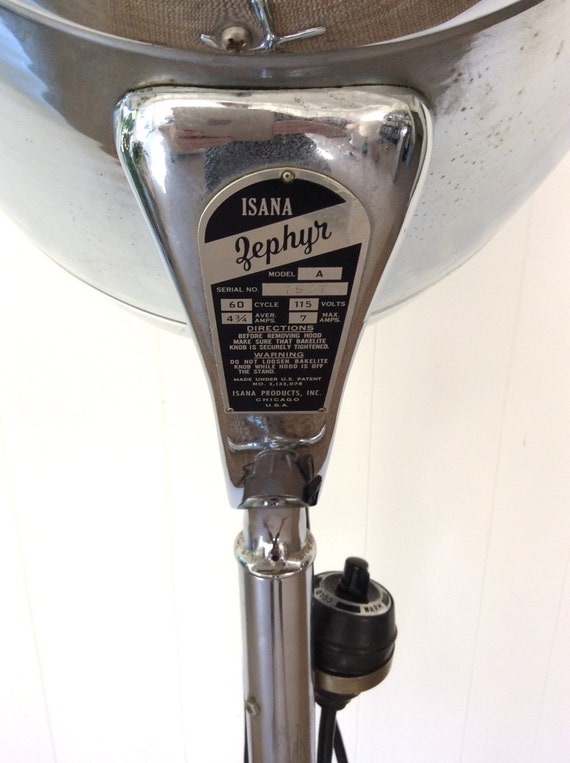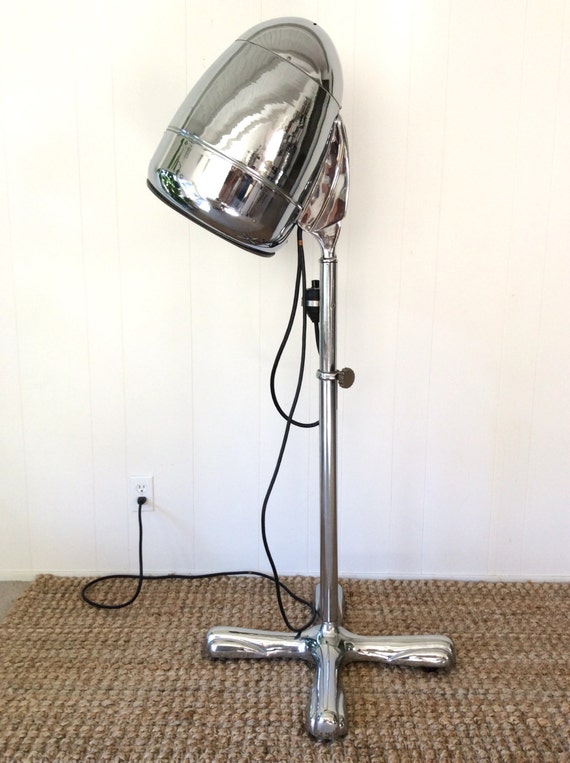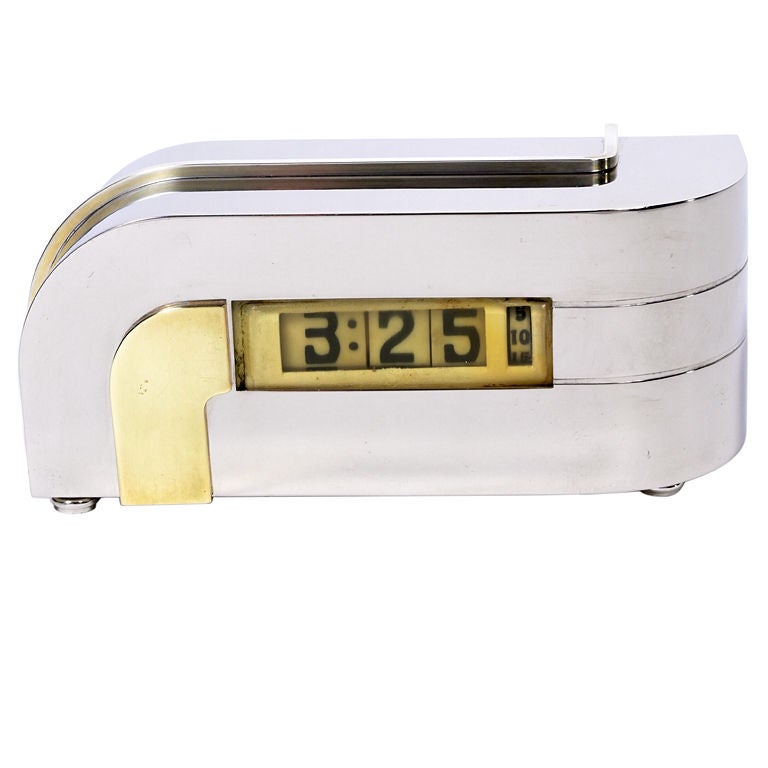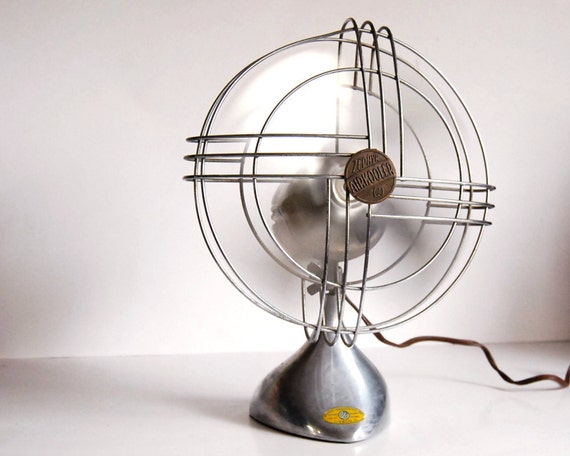We recently repurposed a salon hair dryer into a floor lamp. While it's a very sculptural piece on its own and still functions beautifully, I can't image sticking my head in the bullet-shaped hood to dry my hair. So we polished up the chrome and added a light using all the original wiring, which after nearly a century, was still in good shape. Yes, I said a century! Well nearly, it dates from the 1930s.
The history of hair dryers is quite amazing. Many looked like frightful science experiments:
But more than the evolution of the hair dryer, I was intrigued by the streamlined aesthetics and ancient name of our "Zephyr" model, which was made by Isana Products Inc., Chicago, IL, manufacturers of beauty shop supplies.
 |
| detail of Zephyr standing hair dryer |
The aerodynamic shape of the hood epitomizes America's love of speed and power in the 1930s. As the Great Depression carried on, advertisers focused on the hope of the future and progress. Products were designed for appearance and striped of an unnecessary decoration. The curved forms of the hair dryer would instantly convey to the consumer the machine's efficiency and speed, which was reinforced by the product's name. Zephyr (Zephyrus) was the Greek god of the west winds. He lent his name to
many streamlined products during this decade, including cars, trains,
planes, and clocks (see "The American Century: Art &
Culture 1900-1950", Whitney Museum of American Art, 1999, p. 301).
And as a final tidbit, in 1947, Life Magazine featured a "swords to plowshares" story about a businessman who used WWII bomb casing machinery to manufacture hair dryers after the war. Now that's repurposing at its best.








No comments:
Post a Comment